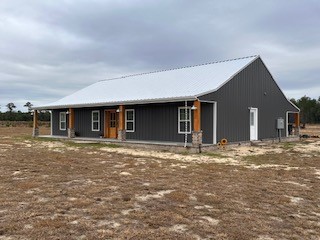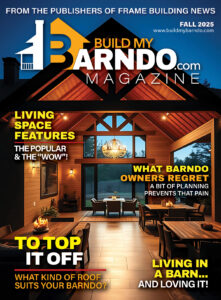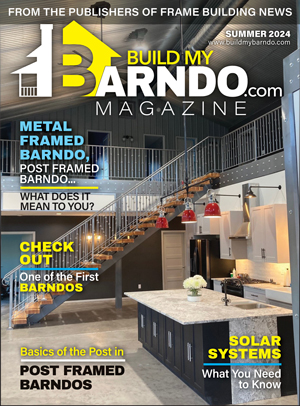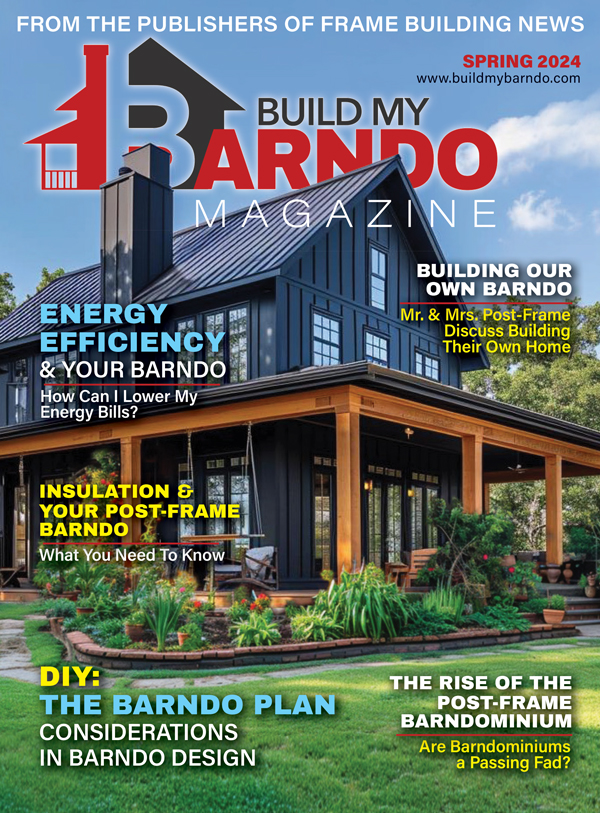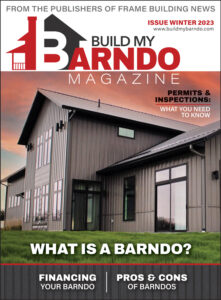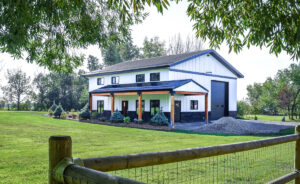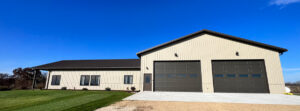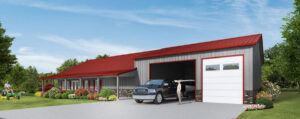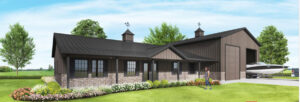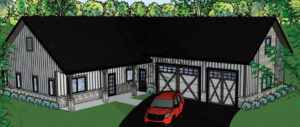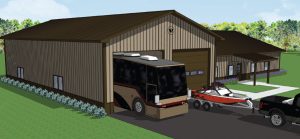By Build My Barndo Staff
Which Type of Barndo Should I Build?
Barndominiums have many different faces; they can look like an industrial building, a barn, a lake cabin, or a luxury home. But not all barndominiums are the same, even ruling out considerations such as exterior color and accents, differences in people’s furnishings, and how they use the “barn” part of the building, there are other differences. One of these is about the framing, the basis of what makes a home a barndo.
What Are Steel Frame and Post-Frame Barndos?
A steel-frame building is exactly what it sounds like; the frame is made of steel components. The same goes for a post-frame building; the frame is made of huge wooden posts or columns. In both cases the frame is designed to carry the load without all the supporting studs used in traditional framing and without requiring beams or load-bearing walls to hold up the roof or the floor above. This means that the floor plan can be just about anything that the building owner desires.
Why Build a Steel Frame Barndo?
A steel-frame barndominium offers many advantages over other types of construction. Consider this long if not necessarily all-inclusive list.
*You can place walls wherever you want them or leave them out and enjoy large open spaces like great rooms.
* You can have big open spaces for cathedral ceilings.
*You can easily incorporate lofts into the open spaces.
* Barndos have the potential for greater energy efficiency due to wide open spaces in the framing that can be filled with insulation.
*A barndominium delivers the opportunity to incorporate a huge garage, workshop, storage area, animal barn, or entertainment space into the same building as your living space. Depending on how you go about it, you can save money by combining the two.
*Larger door openings for better accessibility are easier to accommodate.
*Since there is less framework involved, the shell can be built faster. One estimate is that a 30’ x 48’ shell can be built, including the specification and assemblage of materials, in a week, while conventional framing can take 3-4 weeks. That means that you can likely get into your home faster. It should also save money on labor costs compared to conventional framing.
*There is less scrap and waste with a barndominium because, the main framing members are already cut to length when they get to the site.
*As mentioned above, barndos are more customizable, allowing more freedom with layout and making it easy to add covered porches and other special touches.
*Traditionally a barndominium has a roof and exterior walls covered in metal panels or shingles. If you follow that convention, your home will require less exterior maintenance.
If you have considered building a post-frame home, you may have noticed that the advantages mentioned so far apply to them also. Here are some advantages that apply solely to steel-frame barndos.
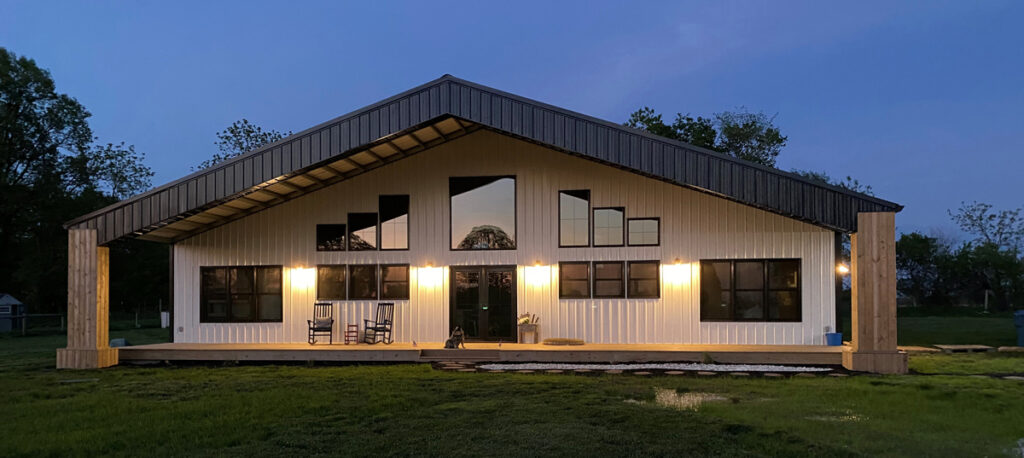
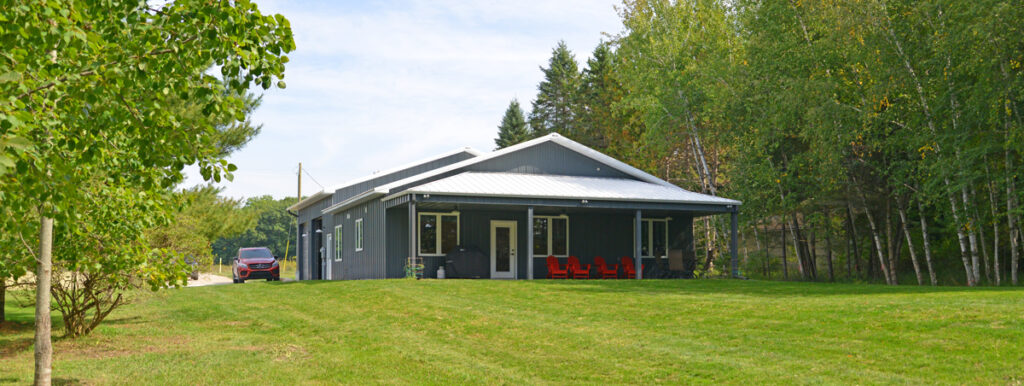
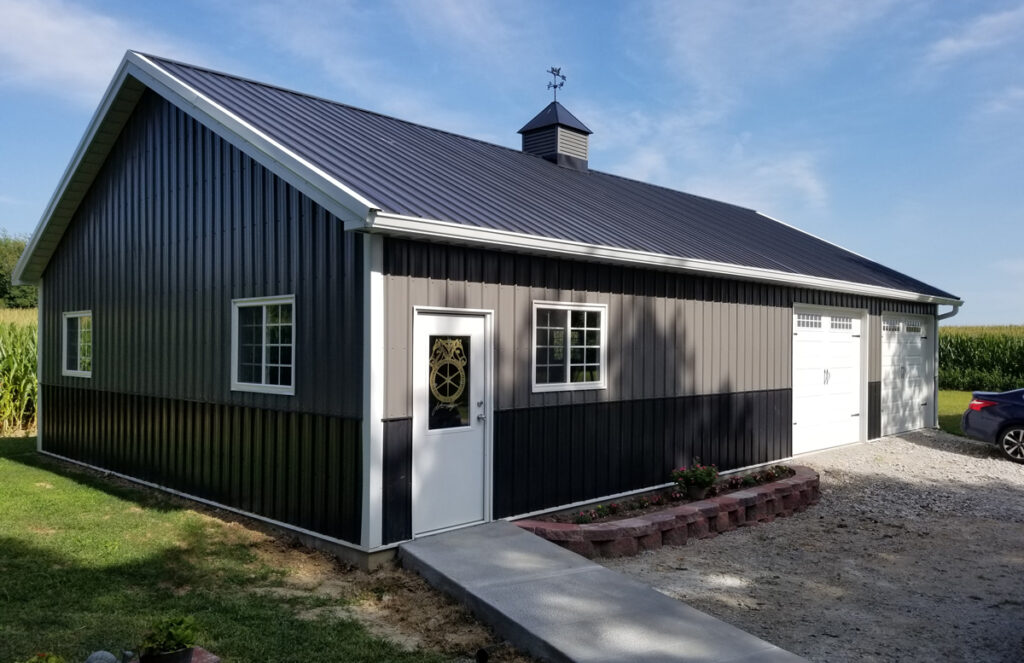

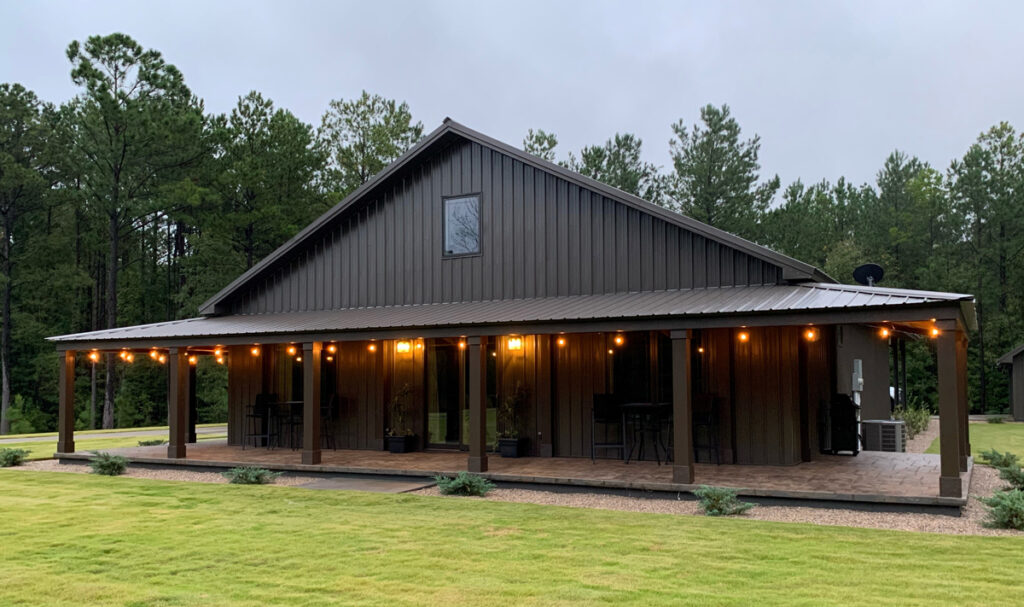
Without knowledge of the project, you wouldn’t know which is a steel frame barndominium and which is a post-frame barndo. Numbers 1, 3, and 5 are steel-framed Barndos. Photos courtesy of Worldwide Steel Buildings. Photo #2 is a post-frame building. Photos courtesy of Wick Buildings. Photo #4 is a post-frame home, courtesy of MrsPostFrame.com
Steel Frame Barndo Advantages:
*Steel framing has a greater strength to weight ratio, so steel buildings are more resistant to storms.
*Steel is more resistant to fire than wood. Stray sparks generally do not set a metal covered home of any kind on fire. Further, it would take a very intense fire to cause the metal to melt and deform. Due to its strength and resistance to fire, some insurance companies have given discounts on homeowner’s insurance for steel buildings. You would have to check with your insurance company to see if your structure would qualify for such a discount.
*Steel framing is not susceptible to termites or bore bees.
*Steel does not crack, rot, or split under normal circumstances.
*Steel is considered a sustainable choice due to its ability to be recycled again and again into the same type of item without loss of quality.
*While steel may cost more up front than a wood frame, the steel frame can save you money when it comes to finishing the interior as the interior wall can be attached to the secondary framing.
There are also advantages that apply solely to post-frame barndominiums.
Post-Frame Barndo Advantages:
*Wood is cheaper than steel. Post-frame construction can also require less specialized equipment leading to less expense.
* Wood is not a very good conductor, which is great for energy efficiency.
*Because thermal bridging (a material passing energy from one place to another) is not a concern, condensation is an unlikely issue with post-frame.
*Wood does not corrode.
* Post-frame construction offers more roof-line options.
*Wood is considered a sustainable choice, since more wood can be grown, and it results in less carbon emissions.
In the end, barndominiums of all kinds have some great advantages over conventional builds, and steel frame barndos and post-frame barndos each have advantages that differentiate them from each other.
If you are looking at price as one of your deciding factors, you will probably have to get quotes to make the comparison since so much is dependent on variables in your plans and builders.
Finally, one very important consideration has nothing to do with the advantages of either building type. Look and see what builder in your area has experience, great reviews, and previous clients willing to give positive testimonials to them. If the only builder in your area with these pre-requisites is experienced only in post-frame, it may be that you should consider post-frame. If the builders with the best references build steel-frame, then that is something to think about. It’s very likely that either style of barndominium build could be used to create the home of your dreams, but a building is only as good as the materials and workmanship that go into it.
Industry Expert Contributors to this Article:
Warren Bott, Worldwide Steel Buildings www.worldwidesteelbuildings.com/
Keith Deitzen, SmartBuild Systems www.smartbuildsystems.com/
Rick Gudenkaupf, Quality Structures www.qualitystructures.com/


